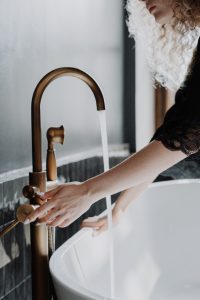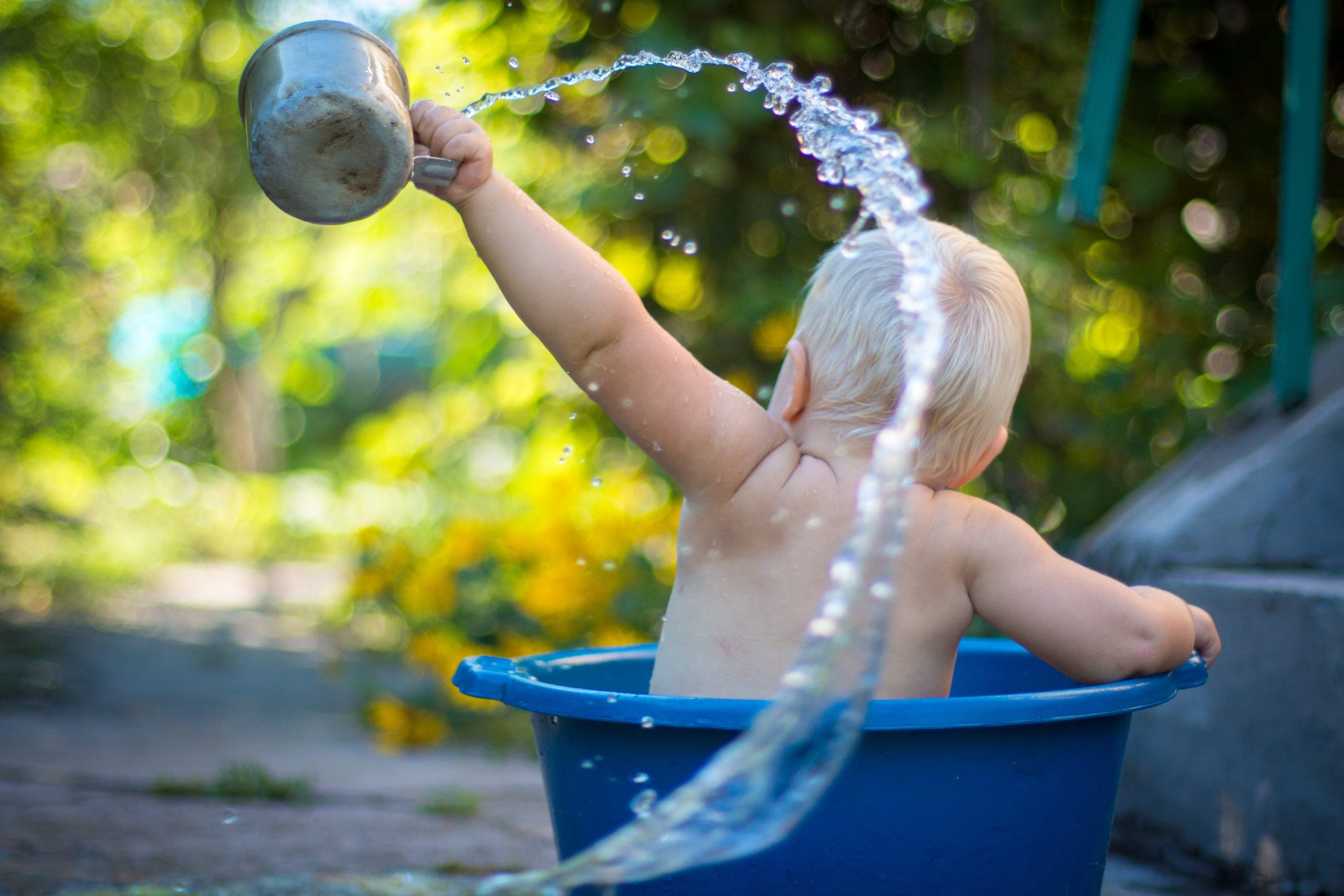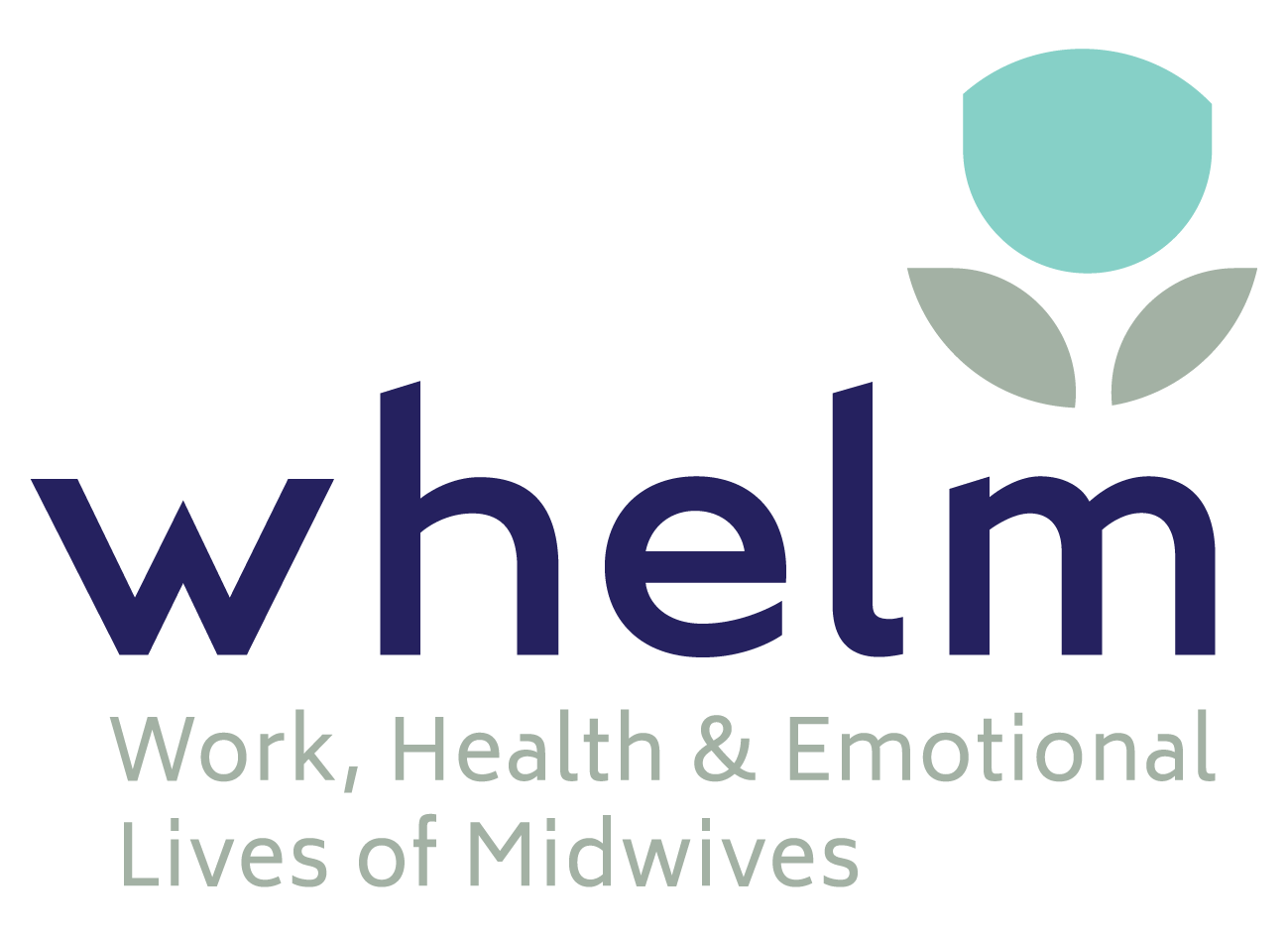
There is increasing demand for access to water immersion (being in a bath or pool during labour) and water birth (where a baby is born in water) in Australia (Dahlen, 2011). Birthing in water enhances women’s sense of being in control (Clews, 2019) and women’s experience of waterbirth is more positive compared to uncomplicated non-waterbirth (Lathrop, et al., 2018; Ulfsdottir, et al., 2018). Women who use water immersion during labour are less likely to request an epidural (Cluett, 2018).
A recent large retrospective study analysed outcomes for 2,567 water births and 23,201 conventional births, concluding that waterbirth was as safe for the baby and the birthing woman as non-waterbirth (Hodgson, et al., 2020). Previous large studies have shown the same (Bovbjerg et al., 2016). Three particular concerns regarding waterbirth are commonly raised (water aspiration, infection, and issues with thermoregulation), but are not supported by available evidence (Young & Kruske, 2013). These concerns can be managed by evidence-informed guidelines, knowledgeable maternity care providers, and access and use of appropriate equipment.
Despite growing interest from women in using birth pools during labour and birth, availability is limited. In Queensland, approximately one in every five hospitals that provide maternity care offer waterbirth. Introducing waterbirth is a more complex task than simply installing birth pools. Health services need time to develop guidelines, educate care providers, and to be confident that the facility is ready to offer waterbirth. Women who use hospital birth services have an appropriate expectation that the services provided are safe.
In 2020, a hospital in Queensland installed birth pools to provide access to water immersion and water birth. Before offering waterbirth, health services managers wanted to be sure that they were ready. Our team, Dr Jyai Allen and Professor Jenny Gamble, were commissioned to conduct an independent assessment of the health service’s readiness and preparedness for waterbirth. Our consultants worked closely with health service managers to understand what was needed and co-designed the assessment project with them. They conducted a literature review which determined that no specific tools existed which could be used to accurately determine whether the hospital was ready to provide waterbirth services. A key part of the project, therefore, involved adapting relevant published documents, clinical guidelines, professional position statements and research evidence to develop a readiness and preparedness checklist which we could apply.
The project was conducted in two phases: initial assessment and final assessment. Our consultants conducted an on-site visit to observe the physical environment including birth suite rooms and pool facilities, equipment and supplies, and emergency facilities which might be required. We observed training sessions and interviewed staff members and reviewed key organisational documents and resources. The checklist supported our assessment of the service and ensured that judgements were based on internationally accepted best practice standards. We generated an interim report which provided guidance to the health service and outlined recommended changes prior to final site assessment.
After our final site assessment, our report concluded that the service was ready to offer water immersion and waterbirth for women with uncomplicated pregnancies. It also provided recommendations for further enhancement and quality improvements following the introduction of water immersion and waterbirth. The health service was delighted with the process, and with our rigorous application of the best available evidence to their specific situation. As a result, they had confidence to offer water immersion and water birth to women with uncomplicated pregnancies – a service enhancement that women had been seeking for several years.
We believe that our waterbirth preparedness checklist can be applied by any maternity service as they plan and prepare to introduce waterbirth. Using the checklist makes it clear what progress has been made and what work remains to be done to ensure the service is ready for waterbirth. We believe that the checklist offers a means to help support the expansion of waterbirth options.
References:
Bovbjerg, M. L., Cheyney, M., & Everson, C. (2016, Dec 31). Maternal and newborn outcomes following waterbirth: The Midwives Alliance of North America Statistics Project, 2004 to 2009 Cohort. Journal of Midwifery and Women’s Health, 61(1), 11-20. https://doi.org/10.1111/jmwh.12394
Clews, C., Church, S., & Ekberg, M. (2019). Women and waterbirth: A systematic meta-synthesis of qualitative studies. Women & Birth, in press. https://doi.org/10.1016/j.wombi.2019.11.007
Cluett, E.R., Burns, E., & Cuthbert, A. (2018). Immersion in water during labour and birth. Cochrane Database of Systematic Reviews, 5, CD000111. DOI: 10.1002/14651858.CD000111.pub4
Dahlen, H., Jackson, M., Schmied, V., Tracy, S., & Priddis, H. (2011). Birth Centres and the National Maternity Services Review: Response to consumer demand or compromise? Women & Birth, 24(4), 165- 72. https://doi.org/doi:10.1016/j.wombi.2010.11.001
Hodgson, Z. G., Comfort, L. R., & Albert, A. A. Y. (2020). Water Birth and Perinatal Outcomes in British Columbia: A Retrospective Cohort Study. Journal of Obstetrics and Gynaecology Canada, 42(2), 150-155. https://doi.org/https://doi.org/10.1016/j.jogc.2019.07.007
Lathrop, A., Bonsack, C.F., & Haas, D.M. (2018). Women’s experiences with water birth: A matched groups prospective study. Birth, 45(4), 416-23. https://doi.org/10.1111/birt.12362
Ulfsdottir, H., Saltvedt, S., Georgsson, S. (2019). Women’s experiences of waterbirth compared with conventional uncomplicated births. Midwifery, 79, 102547. https://doi.org/10.1016/j.midw.2019.102547
Young K, Kruske S. How valid are the common concerns raised against water birth? A focused review of the literature. Women Birth. 2013;26(2):105-109. doi:10.1016/j.wombi.2012.10.006








